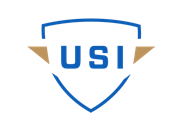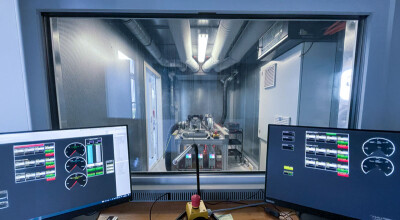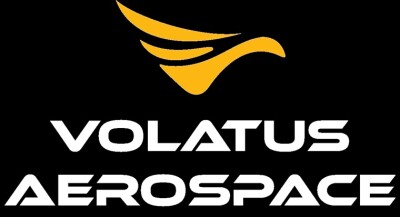“Is the topic of safety in Unmanned Aircraft Systems or UAS operations more about improving technology or is it the remote pilot’s approach to operating?”
This is a question often asked of us at the Unmanned Safety Institute. Both play a role in improving safety as both contribute to protecting from risk; however, technology will always come with an inherent level of risk. Technology can distract the pilot and reduce situational awareness and its failure can lead to pilot task saturation. An increase in automation and aircraft control technology is also something recognized and concerning in the manned aviation world. We call it automation dependency.There are many articles and studies on this topic and how it leads to erosion of piloting skills, but the issue contains many similarities to remote pilots and their dependency on UAS automation and technology to fly the aircraft. This does not imply or indicate that automation and new technology improvements are bad; quite the contrary, as they are certainly a necessity and the reason UAS are a disruptive technology. The issue is in how new technology is used; either as a tool or as a crutch. For this reason, our belief is that a remote pilot’s informed and skilled Aeronautical Decision Making (ADM) will create harmony between the use of improved technology and a remote pilot’s operational capability.UAS technology looks very different depending upon the aircraft manufacturer. The way in which the remote pilot interacts with the control station is considered Human Machine Interface (HMI). The HMI is everything involved with the remote pilot’s interaction with the UAS Control Station (i.e. keyboard, joystick, graphical user interface, mouse/trackpad). A good HMI allows for a remote pilot to positively utilize technology as a tool and reduce task saturation by allowing for quick reference of onboard systems and efficient operation of the aircraft. This is especially important during peak task load times (recovery/landing) and emergency or abnormal situations which require the heaviest remote pilot attention. Of critical importance to improving ADM, is that the technology and the required task requirements do not exceed the remote pilot capabilities during any phase of flight (i.e. pre-flight, takeoff, cruise, approach, recovery). If the task requirements do exceed a remote pilot’s ability, tasks are either partially completed, completed improperly, or skipped altogether.So the question remains, how does one increase a remote pilot’s capability? In manned aviation, pilots are expected to have knowledge, skill, and an appropriate attitude to fly aircraft. To combat the high task loads (shown as red in the chart above), a remote pilot needs to be proficient in these three areas known as KSAs specific to the platform that is flown. This ensures that remote pilot capability surpasses the task load and increases the safety margin to an acceptable level. Commercial UAS companies can reduce remote pilot errors made in the field and increase proficiency by providing resources for educating, training, and assessing remote pilots. On a perfect day for flight, if the system your company is using commercially does not have required training or only light education of UAS procedures has occurred, the number of tasks a remote pilot can handle, not to mention skill level, will vary greatly between your remote pilots. Should the UAS technology fail, a less than perfect day for flight occur, or the skillset of the remote pilot lead to task overload, an accident is likely to occur.The topic of safety is typically an afterthought once the technology is unpacked and ready to fly. A skilled remote pilot making systematic, educated, and measured decisions with information provided from aircraft technology will make a safer National Airspace for all aviators. About the ContributorJosh Olds is Vice President of Operations at the Unmanned Safety Institute based in Orlando, FL. He has served in a variety of UAS operational roles operating and maintaining both fixed wing and rotorcraft Unmanned Aircraft Systems. Josh is a commercially rated pilot and an airframe & power plant mechanic. The most recent operation was in the private security sector as a shipboard pilot/maintainer for unmanned helicopters utilized in anti-piracy operations. In his operational roles, Josh has developed detailed operational and training guidance documents for a variety of industry sectors. In his current role as Vice President of Operations, Josh manages day-to-day operations, including the Institute’s Training Services and Safety Assurance Divisions. Josh also serves on Embry-Riddle Aeronautical University’s faculty as an Assistant Professor.To learn more about the Unmanned Safety Institute, and our flight safety education and training products, including ADM, please visit www.unmannedsafetyinstitute.org or contact us at [email protected].
About the ContributorJosh Olds is Vice President of Operations at the Unmanned Safety Institute based in Orlando, FL. He has served in a variety of UAS operational roles operating and maintaining both fixed wing and rotorcraft Unmanned Aircraft Systems. Josh is a commercially rated pilot and an airframe & power plant mechanic. The most recent operation was in the private security sector as a shipboard pilot/maintainer for unmanned helicopters utilized in anti-piracy operations. In his operational roles, Josh has developed detailed operational and training guidance documents for a variety of industry sectors. In his current role as Vice President of Operations, Josh manages day-to-day operations, including the Institute’s Training Services and Safety Assurance Divisions. Josh also serves on Embry-Riddle Aeronautical University’s faculty as an Assistant Professor.To learn more about the Unmanned Safety Institute, and our flight safety education and training products, including ADM, please visit www.unmannedsafetyinstitute.org or contact us at [email protected]. 















Comments